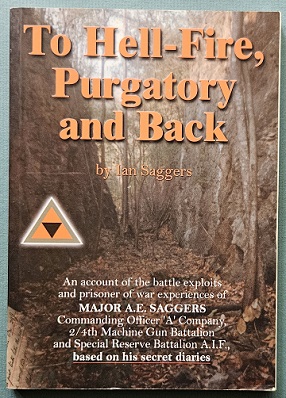Description
Title: Beyond The Road To Damascus – A pictorial journey of C Company, 2/3rd Australian Machine Gun Battalion
Author: Hoehne, Craig and Flanagan, Tim
Condition: Near Mint
Edition: 1st Edition
Publication Date: 2011
ISBN: 9780980870756
Cover: Soft Cover without Dust Jacket – 185 pages
Comments: The pictorial history of ‘C’ Company, 2/3rd Machine Gun Battalion during World War 2.
Includes the formation of the company, it’s service in the Middle East and later as prisoners of the Japanese on the infamous Burma-Thai railroad.
The 2/3rd Machine Gun Battalion was formed in June 1940 under the command of Lieutenant Colonel Arthur Blackburn, VC. Although raised in South Australia, B Company came from Victoria, C Company came from Tasmania and D Company came from Western Australia. Indeed, it was not until April 1941, that the whole battalion was brought together as a whole and this was on board the troopship taking them to the Middle East.
Arriving at the Suez Canal in mid-May, the battalion travelled to Palestine, where it joined the 7th Division which was preparing to invade Syria. Allied forces began their invasion of Syria on 8 June and were soon engaged in heavy fighting against the Vichy French.
Although Syria was a short campaign, the machine-gunners saw extensive service. B Company supported the 25th Brigade, covering the attack on Fort Metulla on 10 June and participating in the fighting around and defence of Jezzine. In mid-June, A Company supported the 2/2nd Pioneer Battalion attack on Fort Merdjayoun, while D Company was attached to the 21st Brigade, which captured Said (Sidon) and Damour. C Company’s first action was at Quoneitra in support of British units. By the second week of July the campaign was over, with the Vichy French surrounding and a cease fire coming into effect at midnight on 11 July. The machine-gunners remained in Syria as part of the occupation force for the rest of the year.
But by now, though, Japan had entered the war and the AIF had been recalled to Australia. In January and February 1942 units from the 7th Division began to return to Australia and the 2/3rd (less B Company) sailed on 1 February. However, the battalion was about to caught in the Japanese thrust.
British forces in Singapore surrendered on 15 February. Two days later the troopship Orcades, carrying the 2/3rd, 2/2nd Pioneer Battalion, and 2/6th Field Company, reached Oosthaven in Sumatra, before going on to Batavia in Java. The Japanese were already moving through the Netherlands East Indies and, in what was more a political decision than strategic one, it was decided these divisional support units would make a stand on Java. It was a futile gesture.
The small Allied force that was supposed to defend Java was built around the 2/3rd and other units aboard Orcades, as well as a battery of American artillery already on Java and a squadron from the 3rd King’s Own Hussars. Blackburn was promoted to brigadier and was placed in command of the force which became “Blackforce”.
The Japanese landed on Java on 28 February. Blackforce went into action at Leuwiliang, near Buitenzorg, on 4 March. They fought the Japanese for two days but on 8 March Dutch forces surrendered and the next day Blackforce was ordered to lay down its arms.
Those who had survived the fighting spent the rest of the war as prisoners. For the next three years they were used for labour, most of them working on the infamous Thai-Burma Railway or languishing in prison camps. One-hundred-and-thirty-nine men from the 2/3rd died while prisoners.
However, not all of the battalion was captured. While its headquarters and fighting components were in action in Java, the battalion’s B Company had returned to Australia in March. The group formed the basis of what was essentially a new 2/3rd, as from April the battalion was reformed at Ingelburn in Sydney, before it moved to the prisoner of war camp at Cowra in July.
In May 1943, after ten months at Cowra, the battalion moved to Queensland. Based at Deception Bay, C Company went to Moreton Island, D Company to Bribie Island, and B Company to Merauke in Dutch New Guinea. Later in the year the 2/3rd was concentrated at Wondecla, on the Atherton Tablelands, where it came under the command of the 6th Division.
The 2/3rd spent the rest of 1943 and almost all of 1944 on the Tableland. In December the battalion was sent to New Guinea to support the 6th Division’s Aitape-Wewak campaign. But rather than fight as a machine-gun battalion, with its companies separated and supporting the division’s different units, the 2/3rd fought as infantry from February 1945. The machine-gunners performed well in their new role, capturing a number of positions. B Company even made an amphibious landing at Dove Bay, east of Wewak, as part of Farida Force in May.
Following Japan’s surrender in August, the 2/3rd’s ranks thinned, as men were either discharged or transferred. In December the remaining members of the battalion returned to Australia and in January 1946 the 2/3rd was disbanded in Sydney.
Includes Nominal Roll





